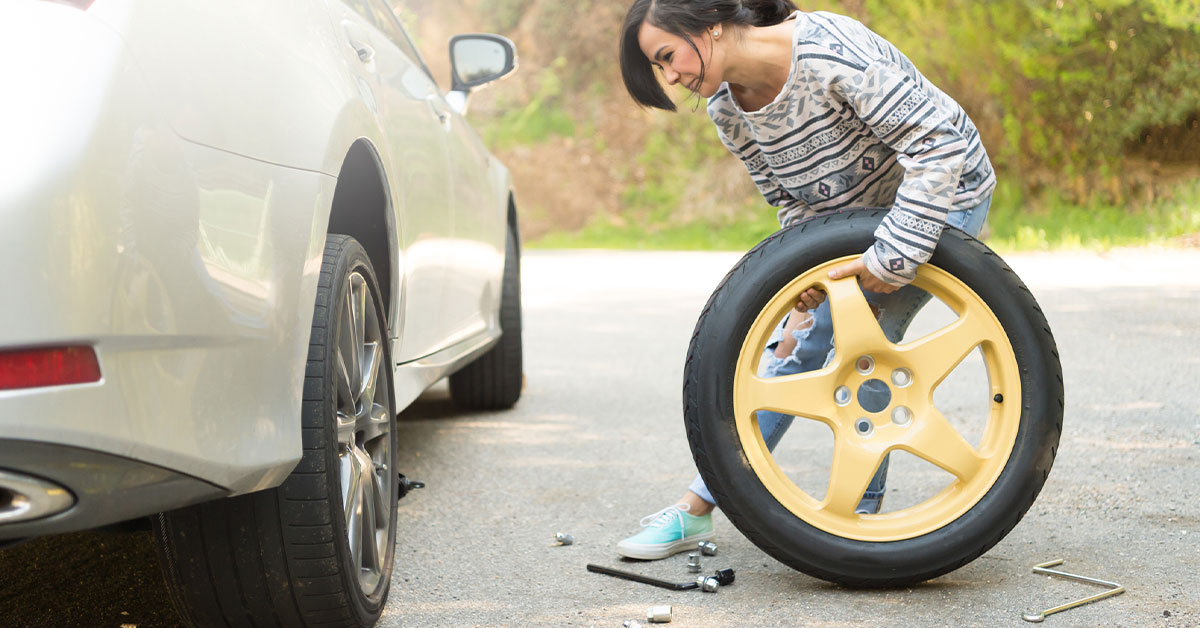
Not everyone was a scout in their early years, but we could all benefit from being prepared. As a driver, having a spare tyre is essential; you never want to find yourself stranded by a flat, whether you’re in the city or on a dusty stretch of outback road. Having a roadworthy back up is an absolute must. The question is, though: which one?
The range and style of spare tyres has dramatically improved in recent years, to the point that drivers now find themselves spoilt for choice. When the market becomes this saturated, it becomes extremely difficult to cut through the noise and find out which spare tyre is best for your car and your driving conditions.
So, here’s our noise-cutting guide to buying a spare tyre.
Spare Tyre Options
Full-size spare
In the dim past, the full-size spare was the only option available to drivers. The market has since swelled with choice, but the full-size spare is still the best option depending on the type of driving you’ll be doing.
If you plan on doing big road trips through some remote regions of our sprawling country, or you happen to live in these remote regions, then the full-size spare is the wisest option. When you get a flat but you still have many, many kilometres of rough road to travel, you need a spare that’s as capable as the tyres fitted.
The downside of full-size spares is their size; they take up more space than the space-savers usually included by car manufacturers these days, so you’ll probably find yourself with a bulge in the boot floor. Of course, if you have a 4WD, there are more storage options.
The other caveat of full-size tyres is that you need to know how to change a tyre – or wait for roadside assist or a good Samaritan.
Space saver
This is what most new car owners will find stowed in a recess in their boot. These undersized tyres are the result of an industry trying to save on manufacturing costs, reduce weight to bring marginal improvements to fuel efficiency and maximise boot space.
At around half the width of normal road tyres, space savers obviously provide nowhere near the same grip and are therefore limited to a top speed of 80km/h. They are better than nothing, however, and perfectly adequate when you simply need to get to a service centre and have your flat tyre attended to.
One thing to note. If you have a front-wheel drive car, don’t put the space saving tyre at the front. Because of their reduced grip, you don’t want them responsible for power and steering. So, if you get a flat at the front, move a rear tyre forward and put the space saver on the rear axis.
Run flat tyres
The game changer. A tyre that you can still drive on when punctured? No getting out in the pouring rain on the shoulder of a freeway after eight hours behind a desk performing soul-destroying tasks? Yes please!
Run flat tyres, first introduced by BMW, have reinforced sidewalls, which means they don’t rely purely on air pressure to maintain their rigidity. Get a puncture and you can still drive on them, albeit at a reduced speed (80km/h) and not indefinitely. Like space savers, a punctured run flat is designed to get you to a service centre. They are also very safe if you were to get a puncture at high road speeds, since the stability is maintained. Imagine a blow out at 200 km/h on a German autobahn – get the picture!
Some will also say that the ride quality is worse with run flats. In the early days, this was certainly true, but run flats have come a long way since and many drivers find no noticeable compromise. Manufacturers have also fine-tuned the suspension to accommodate run-flat tyres. Of course, much of that depends on the car being driven, so you can’t really tell until you give it a go.
If you’re in the market for a spare tyre, get the right advice
As you can see, there are options, but the field may become limited due to the car you drive. If you want to make sure you purchase the right spare for your situation, drop in to Eastern Tyre Centre and talk to the experts. We’ll chew the rubber about the type of driving you do normally, what you might have planned and – of course – the type of car you drive. With our guidance, you’ll drive away knowing you’ve been equipped with the best back up to a flat tyre for you.
Credit : Source Post






